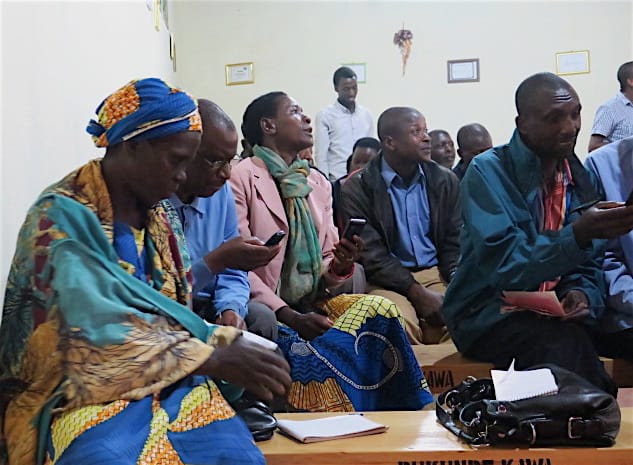To Fix the Gender Gap, Fix the Digital Divide
It is no secret that women have unequal access to economic opportunities. Here’s what’s new: As digital technologies dramatically reshape our economies, they can either worsen the problem, or help fix it. Think about it: Most job growth will come from STEM fields, yet women make up only 12 percent of engineering students. Much of our day-to-day life is dictated by digital gadgets, yet few women are involved in developing them, and fewer women than men own mobile phones or have basic internet access.
Enter Women and Technology Challenge
That’s why MIT’s new Solve initiative launched a Women and Technology Challenge asking for technology-fueled solutions that enable women and girls’ full participation in the economy.
Solve is bringing together leading women like Ursula Burns, former chairman of Xerox; Indra Nooyi, chairman and CEO of PepsiCo; and Phumzile Mlambo-Ngcuka, executive director of UN Women, who all agree that fixing the gender gap requires fixing the digital divide. Together with 13 other women leaders from MIT, Dubai Future Foundation, Alphabet, Forbes and more, these women form the leadership group of Solve’s Women and Technology Challenge. The group will help support winning solutions to our challenge question: “How can women and girls of all socioeconomic backgrounds use technology to fully participate and prosper in the economy?”
How can technology be part of the solution?
Here are some aspects to think about:
- Access to finance and financial services: Forty-two percent of women and girls worldwide – 1.1 billion in total – are unbanked. Women are more likely than men to lack credit history and the mobility to go to the bank. That is why financial technology (or fintech) can play a large equalizing role – not only in terms of access, but also in terms of how financial products and services are designed. For example, fintech products that are more adapted to women’s risk preferences can help close the wealth and investment gap between genders.
- Mobility and new income streams: In contexts where women’s movements are severely limited due to cultural or security concerns, tech can play a role in either facilitating or directly providing income-generating opportunities. For example, where harassment remains one of the main deterrents for engaging in the workforce, location-reporting tools can give women more confidence to go to work. Working remotely thanks to online micro-jobs platforms can provide a whole new set of opportunities. But tech companies need to put in the extra effort so that the gig economy provides dignified standards of living in ways that are equally attractive to men and women.
- Tech literacy: Digital and STEM skills are the hottest in town, and job openings in computer, technology and engineering-related fields will continue to grow. Encouraging girls’ STEM (or STEAMD!) education from an early age, and teaching digital literacy to women and girls, are the first steps for closing future gaps. Also necessary: creating the systems and cultures that help women and girls remain and thrive in those fields.
- Correcting for bias: Algorithms that feed on available data perpetuate gender stereotypes and biases. Engineers have taken notice, and some are working on weeding out prejudice from artificial intelligence. A.I. is also being used to surface bias in the workforce in hiring and promoting. Just one example is automated screeners highlighting “male” adjectives in job descriptions that discourage women from applying to leadership positions.
- Creative economy: As people are pushed out of industries by automation, they will seek alternative forms of employment. Original artistic creation, handcraftsmanship, innovative design and other types of creative work will become vital to sustaining economies. Technology can serve as an enabler of these opportunities by offering access to markets, lowering the costs of launching new ventures and allowing work hour flexibility. All those factors make the creative field an attractive one for women.
submit your idea by aug. 1
The gender gap is closely linked to the digital divide. If we double the pace at which women become frequent users of digital technologies, the workplace could reach gender equality by 2040 in developed nations and 2060 in developing nations – much earlier than current projections.
Are you working on any of the above aspects? Or can you think of other examples in which women and girls are using technology to participate more equally in the economy? Apply to Solve’s Women and Technology Challenge by Aug. 1. You could be invited to come pitch in front of our Leadership Group during the United Nations General Assembly week in September 2017 in New York. If selected, you will join the Solve community as a “Solver” and receive support from cross-sector leaders interested in investing in innovative social impact projects. Innovators who submit arts- and culture-based interventions that use technology to connect women and girls to the creative economy could receive mentorship from world-renowned cellist Yo-Yo Ma.
Make sure technology advances rather than stalls women’s economic opportunities; submit your idea to our Women and Technology challenge here by Aug. 1.
Hala Hanna is director of the Economic Prosperity pillar at Massachusetts Institute of Technology’s Solve initiative. Caroline Federal is a community relations officer of the Economic Prosperity pillar at MIT Solve.
Photo credit: MIT Solve
- Categories
- Education, Finance, Impact Assessment, Technology



